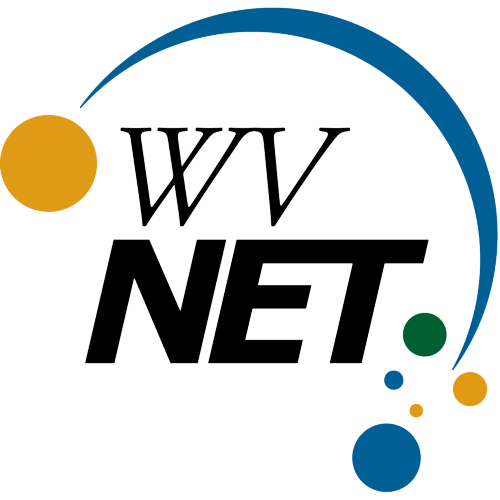Scientifically Based Research
|
High Yield Strategies Identified |
Scientifically Based Research |
| Use of data to target improvement efforts | Title I Compliance
High performing schools increasingly use data systems to inform decisions, manage processes, determine program effectiveness, forecast problems, and ultimately improve system responses to student needs. The use of high quality, targeted data can effectively improve learning. (Bernhartdt, V. (2004) Data Analysis for Continuous School Improvement (2nd ed.) Larchmont NY: Eye on Education). Student achievement data are the most important type of data on which to focus. Educators should understand that achievement data comes in forms other than standardized test data. A comprehensive assessment plan can make use of data from each of three tiers: annual, large-scale assessment data; periodic assessment data; and ongoing classroom assessment data. (Guide to Using Data in School Improvement Efforts. Retrieved March 13th, 2005, from Learning Point Associates, North Central Regional Education Laboratory.
Gathering data is only the beginning step of a system of analysis which extends the process by disaggregating subgroups and specific content areas. Data must aggressively pursue other areas that impact student learning: qualified teachers, curriculum, challenging courses, effective instruction, adequate time, and sufficient resources.
Jerald, Craig. (2002) Dispelling the Myth Revisited. Washington, D.C.: The Education Trust.) |
| Change based on internal and external factors | Title I compliance
Research and practice offer an insightful conclusion to those considering improvement efforts. Change should be based on both internal and external factors and change is difficult. Those who seek to initiate change must recognize that an existing system already has a culture in place. In general, those working within the system will always resist to save the system and its culture. The fragmented, piecemeal approach to change that characterizes most school reform lacks the power and focus needed to overcome that resistance. The change process is filled with uncertainty and anxiety, conditions that are certain to lead to conflict. “Conflict is essential to any successful change effort”. (Fullen 1993)
Dufour, Richard and Robert Eaker (1998) |
| Highly Qualified Teachers | Title I compliance Using data from a 50-state survey of policies, state case study analyses, the 1993-94 Schools and Staffing Surveys (SASS), and the National Assessment of Educational Progress (NAEP), this study examines the ways in which teacher qualifications and other school inputs are related to student achievement across states. The findings of both the qualitative and quantitative analyses suggest that policy investments in the quality of teachers may be related to improvements in student performance. Quantitative analyses indicate that measures of teacher preparation and certification are by far the strongest correlates of student achievement in reading and mathematics, both before and after controlling for student poverty and language status. State policy surveys and case study data are used to evaluate policies that influence the overall level of teacher qualifications within and across states. This analysis suggests that policies adopted by states regarding teacher education, licensing, hiring, and professional development may make an important difference in the qualifications and capacities that teachers bring to their work.
Darling-Hammond, L., (2000) Teacher Quality and Student Achievement: A Review of State Policy Evidence Education. Education Policy Analysis Archives, Vol. 8 Number 1.
|
| Highly Qualified Teachers
(2nd selection) |
Title I compliance
The US Department of Educations’ Secretary's Third Annual Report on Teacher Quality, (2004) states: “A highly qualified teacher matters because the academic achievement levels of students who are taught by good teachers increase at greater rates than the levels of those who are taught by other teachers. In fact, highly qualified teachers are able to raise the academic achievement levels of all students to high levels--not just the students who are already performing well.” Thus, the need for highly qualified 21st Century proficient teachers is apparent. Secretary’s Third Annual Report on Teacher Quality. Available at http://www.ed.gov/about/reports/annual/teachprep/2004/index.html |
| Proactive Parent Involvement System | Title I compliance
More than thirty years of research shows a strong link between educational benefits to children and various forms of family involvement. The educational benefits to children include higher grades and test scores, better school attendance, higher graduation rate, greater enrollment in post secondary education and more positive attitude about school (Henderson and Berla, 1994).
Similar finding have been sited in A New Wave of Evidence: The Impact of Family and Community Engagement on Student Achievement, by Anne Henderson and Karen Mapp. “The evidence is consistent, positive and convincing: families have a major influence in their children’s achievement.” |
| Parents as respected and valued partners | Title I compliance
A series of studies of schools and school districts identified the importance of 8 “essential elements” for effective leadership and programs of school, family, and community partnerships. These include: leadership, teamwork, action plans, implementation of plans, funding, collegial support, evaluation, and networking (Epstein, 2001; Epstein et al., 2002). Districts and schools that organized programs with these components had higher-quality programs, greater outreach to parents, and more parents involved from one year to the next (Epstein, 2005b). DISTRICT LEVEL. Data from school districts in NNPS revealed that three factors affected district leadership and district leaders’ impact on school programs: (1) years of experience and time on partnerships; (2) use of NNPS planning and evaluation tools and technical assistance; and (3) the district leaders’ direct assistance to schools (Epstein, 2005c; Epstein & Williams, 2003; Epstein, Williams, & Jansorn, 2004; Epstein, Williams, & Lewis, 2002;). Specifically, district leaders for partnerships conducted significantly more activities if they had worked for more years on partnerships and had more exposure to and familiarity with tools, guidelines, and services to strengthen partnership programs. More experienced district leaders were more likely to write annual district-level leadership plans, identify a budget, conduct training workshops for school teams and other colleagues, offer grants or other funding to schools, recognize excellence in school programs, help schools share best practices, and conduct other leadership actions. These district leaders visited with school teams, assisted teams more often, and helped schools conduct end-of-year evaluations to assess progress, and take other evaluative actions. Regardless of their starting points in the prior school year, district leaders who used NNPS tools and services for planning and evaluation increased district-level activities, facilitated their schools, helped schools address challenges to reach more families, and increased the overall quality of their programs (Epstein, 2005c). |
| Strategies for providing
social, emotional, and academic support |
Title I compliance
Not every child’s school experience is an easy one. The school system must create a culture that accepts responsibility for all students, regardless of background. Growing evidence strongly suggests that social and emotional learning is a key element in meeting all our educational goals. Support programs, such as counseling, health services, sound nutrition and physical activity, are necessary to meet specific individual needs. Principles of differentiation (Tomlinson, 1999) must be implemented and universal design (Orkwis & McLane, 1998) must be applied to facilitate equal access to the curriculum by students of diverse abilities and needs.
Tomlinson, C.A. (1999). The differentiated classroom: Responding to the needs of all learners. Alexandria, Va. Association for the Supervision and Curriculum Development.
Orkwis, R., & McLane, K. (1998). A curriculum every student can use: Design principles for student access. ERIC/OSEP Topical Brief. Reston, Va; ERIC/OSEP Special Project. (online at Http://www.cec.sped.org/osep/udesign.html) |
| Adjustment of instructional time by grade, class, school, and system to meet the needs of varied learners | Title I compliance
The 1994 report of the National Education Commission on Time and Learning, Prisoners of Time, is still considered to be among the most authoritative studies of its kind. Examining the relationship between time and learning in the nation’s schools, the commission concluded that time is the missing element in our great school debate about learning and the higher standards for all students. Schools are “captives of the clock and calendar”. The Commission’s analysis of how time is currently used in American schools makes one thing clear. Even with the confines of a 180 day school year, reclaiming the academic day will increase the amount of instructional time. It is recommended that the existing school day be devoted to instructional time in core academic areas. National Education Commission on Time and Learning, Prisoners of Time: Report of the National Educational Commission on Time and Learning, April 1994. According to Hall, three things can be altered to increase student achievement: (1) instructional delivery;(2) instructional materials, programs and strategies; (3) increased time. (Hall 2006) |
| Formative assessment | Title I compliance
If the purpose of the assignment is to improve student learning, then the teacher should employ formative assessment. This focuses on giving students frequent quick feedback as written comments. The results of formative assessment often drive changes in instructional strategies, collaboration among staff, modification of school schedules, and realignment of resources. To be most effective, formative assessment must be ongoing. If the purpose of the assignment is to create a finished product, then the teacher should employ summative assessments. The teacher gives the feedback needed to “justify” the grade assigned. The teacher must establish sound assessment criteria and inform students of this criterion. Doing these two things enables student and faculty expectations to match. It makes defending your summative assessments much easier.
(Erin Hogan Fouberg, Summative versus Formative Assessment, Teaching and Learning Technologies, TIP) |
| Frequent monitoring of student progress | Title I compliance
Progress monitoring is a scientifically based practice that teachers can use to evaluate the effectiveness of their instruction for individual students or their entire class. Teachers identify goals for what their students will learn over time, measure their students' progress toward meeting these goals by comparing expected and actual rates of learning, and adjust their teaching as needed. The benefits of progress monitoring include accelerated learning for students who receive more appropriate instruction and more informed instructional decisions and higher expectations for students by teachers. Overall, the use of progress monitoring results in more efficient and appropriately targeted instructional techniques and goals, which, together, move all students to faster attainment of important state standards for their achievement.
Fuchs, L.S., Fuchs, D (2002) |


